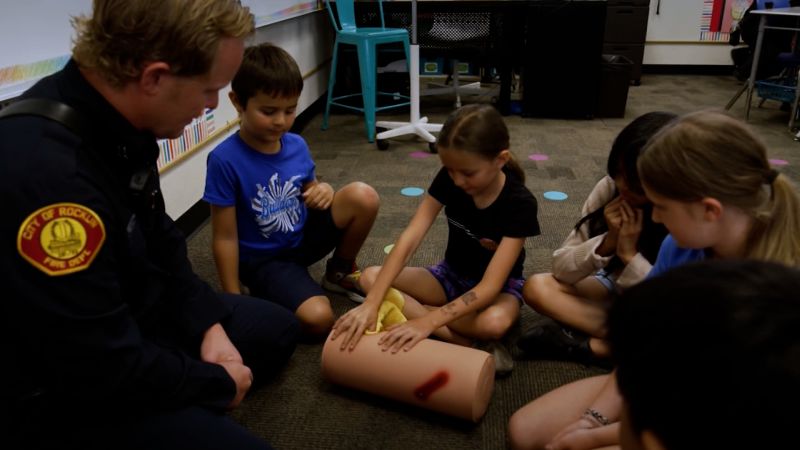“Chances are, you’re never ever going to have to use this. If you do, it’s gonna be scary,” Kate Carleton told the 20 or so 8- and 9-year-olds. “But because we’ve taught you what to do, it makes it a little less scary.”
She spent the next 30 minutes teaching them how to stop a wound from bleeding out.
…
Although a child dying at school in a mass shooting may be unlikely, a child dying from a gunshot is not. Firearms are the leading cause of death among people 18 and younger in the US, accounting for nearly 19% of all childhood deaths.



This is an odd characterization of the Stop the Bleed program. Largely I’ve seen it targeted at adult and people in industries at particular risk, rather than children in particular.
That said I could get behind a CPR/AED/StB program being standardized for a high school course level. These types of programs tend to take a little amount of time to teach and can buy enough time for EMS to arrive. Although 8-9 yr olds seems like a bit young.
Honestly high school feels a bit too long to wait; middle school seems to be the age that gets a lot of weird and stupid, but surprisingly bad injuries.
Any training needs to be tailored to age.
Training for 5 year olds should be mostly about thinking about not putting themselves in danger, recognizing when somebody needs help, and getting help.
As for high school age you can get certified as an EMT at 16, so high school age can handle this type of class.
I am all for basic first aid to be part of school curriculum. CPR, AED, and Stop the Bleed.
There are so many reasons to have a stop the bleed kit and training that isn’t gun shot related. Industrial accidents, automobile accidents, and even accidents around the home like kitchen accidents could cause a serious bleed. It’s not a terrible thing to understand the basics of preventing someone from bleeding out.